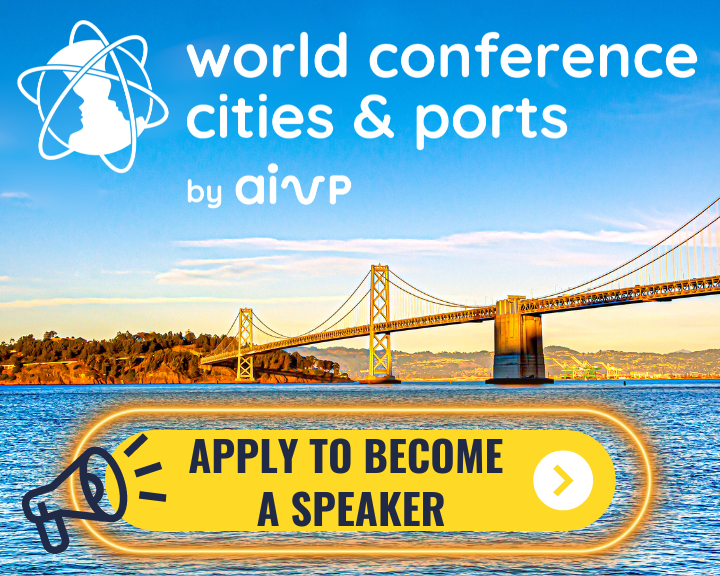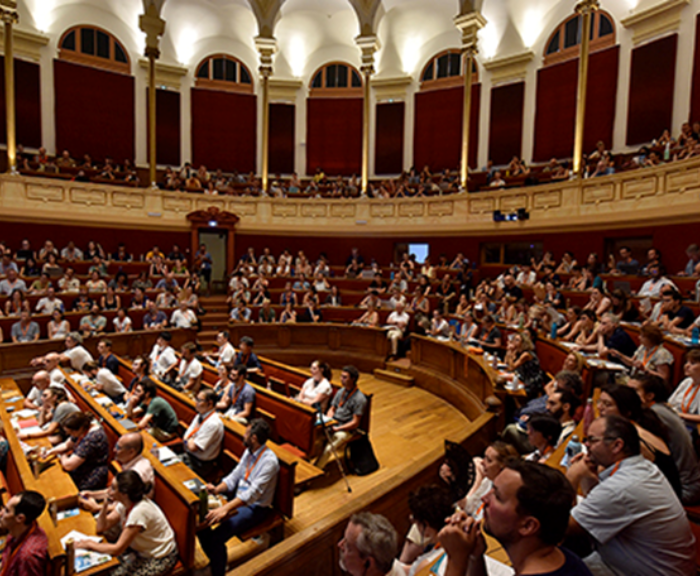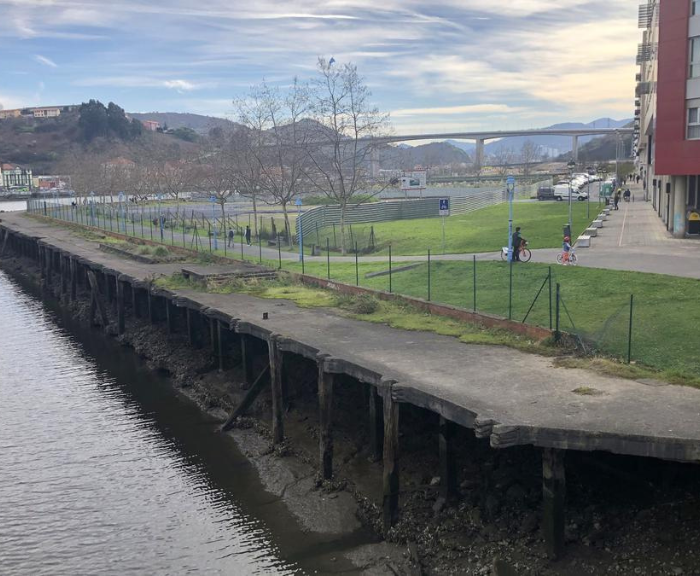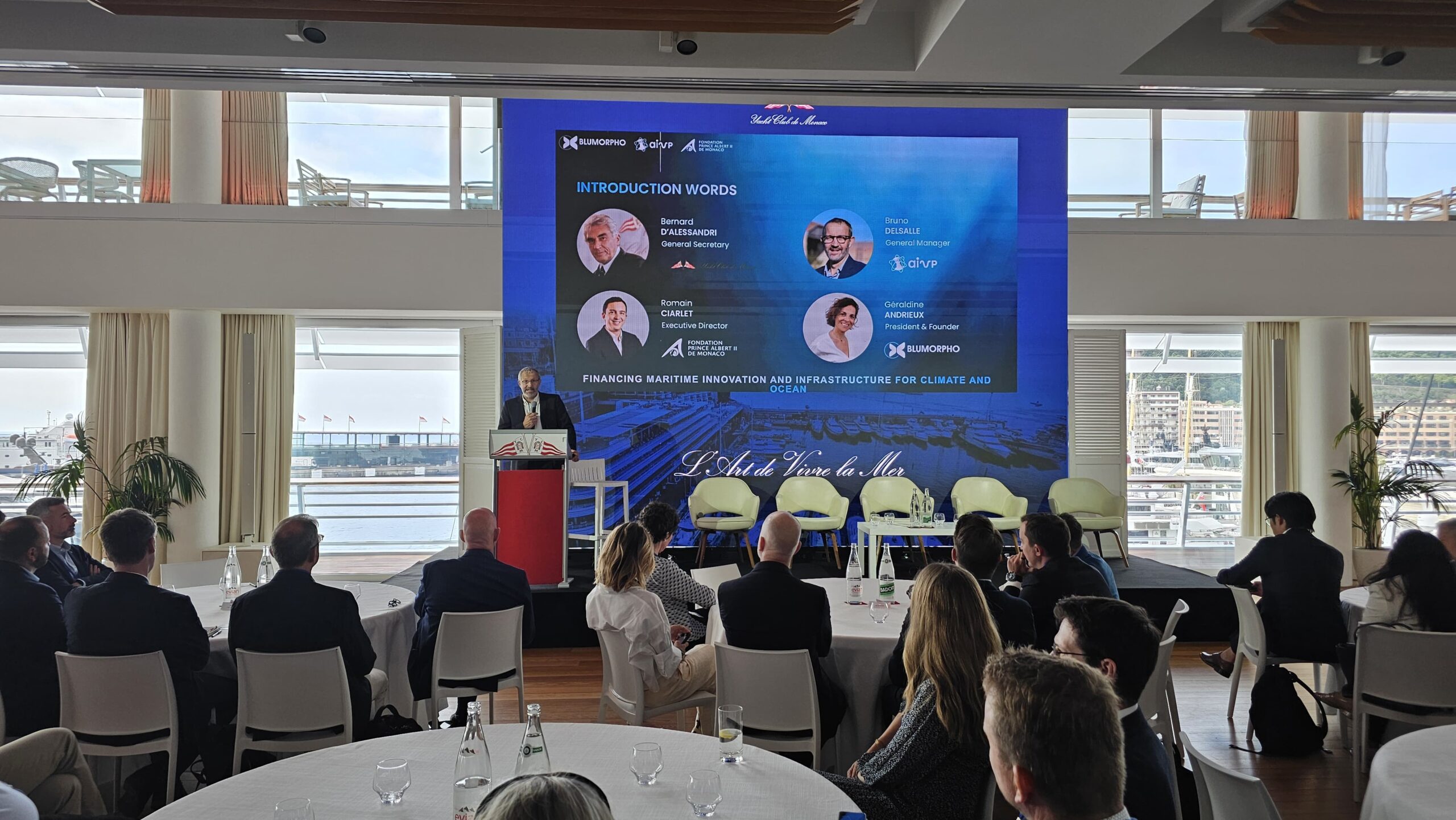The 19th AIVP World Conference on Cities and Ports will be held in Lisbon (Portugal) from 27 to 29 November 2024 under the theme “Open Piers: Steering flows between people, planet, and port cities”.
If you are an expert who is passionate about the future of port cities and would like to contribute to this discussion, we invite you to join us as a speaker. Fill in the “Become a speaker” form available on our official website, and our team will contact you to discuss participation opportunities. The deadline is 17 May 2024.
Discover the descriptions of the parallel tracks that will be discussed during the AIVP Conference:
Track n°1 – Cruise and Mobility
Description:
One of the key flows in many port cities is created by the arrival of cruise ship passengers through the piers. This is both an opportunity and a challenge if not managed properly. The recent Covid-19 pandemic changed the way we look at this activity, accelerating certain transitions in the industry, such as becoming more environmentally sustainable and paying more attention to the demands of the destinations. Today, we look for a new balance between touristic activities and the needs of local inhabitants. New fuels, OPS systems, new traffic management tools, new forms of tourism, and innovative mobility solutions help port cities manage these flows. In this session we will learn from different experiences in the sector, hearing different stakeholders share their perspectives and projects.
1-AIVP Agenda 2030 Goals: 03 Sustainable mobility + 09 Health and life quality
2-Keywords: Cruises, passenger terminals, tourism management, multimodality, public transport, stakeholder engagement
3-Key questions:
- How can we strike a balance between cruise tourism flows and local priorities?
- What are the best communication and engagement strategies to establish an active dialogue with the local community?
- What new technologies help reduce the negative impact of cruises?
- What are the new solutions to improve port-city mobility?
Track n°2 – Culture and Governance
Description:
Port city stakeholders have shared values, a maritime identity that unites them, and a desire to develop the port together, as it is the driving force behind the local economy and at the heart of their territory’s history. For fifteen years now, the AIVP has been promoting the Port Center concept, with the aim of introducing citizens to the complexity of today’s port and enabling them to express their ideas on future projects. Port-city governance is essentially multi-stakeholder. It is based on arrangements that are always different from one territory to another. In this session, we will learn about innovative governance in port cities. We will also discuss new ways to valorize and showcase the port city culture. From festive programs to exhibitions by local artists, from heritage preservation and reuse to creative new shared tourism policies, there is a multiplicity of initiatives that port authorities and local authorities can take together in the cultural field. With the rise of industrial tourism, the idea of “experiencing the port from the inside” has never been so popular.
1-AIVP Agenda 2030 Goals: 04 Renewed governance + 06 Port culture and identity
2-Keywords: Maritime identity, port heritage and culture, port events/festivities, tourism, Port Center, education, governance, multi-stakeholders, port-city relation
3-Key questions:
- How to valorize the port identity of today?
- What are the best ways to create a multi-stakeholder governance which includes all relevant actors?
- How to create and develop shared values on the port city territory
- How to create a feeling of belonging to the same port community?
Track n°3 – Port City Interface and Climate Change
Description:
River port cities are once again regaining access to their waterways. Seaports are facilitating the access to the seas and coasts. River, estuary and coastal revitalization projects, urban development programs and new activities (commercial or leisure) bring people and new users to the waterfronts. However, these efforts will be in vain if they do not consider climate change and the extreme weather events that threaten them (such as floods and droughts). With this parallel track, we aim to gather presentations addressing the port-city interface and its resilience to climate change, comparing different approaches, both for river and coastal port cities.
1-AIVP Agenda 2030 Goals: 01 Climate Change Adaptation + 08 Port City Interface (read here: Commitment – AIVP).
2-Keywords: riverfront, interface, climate resiliency, accessibility, planning, architecture, public space.
3-Key Questions:
- How can different uses coexist on riverfronts?
- What design strategies combine climate change adaptation and an attractive port-city interface?
- What new functions can be developed on the waterfront?
- What new types of public spaces on the waterfront promote new interactions between the people and the water
- What flows shape the port-city interface today?
Track n°4 – Environmental Protection
Description:
As ports expand their activities and cities continue to grow in size and population, the surrounding environment and biodiversity are placed under pressure. Various sources of disturbance impact the marine and terrestrial environment surrounding port cities: from oil spills to micro-plastic pollution, from underwater noise to invasive species introduction, to the destruction of habitats and ecosystems. However, port cities and their stakeholders are taking action in various ways to limit their negative externalities and protect the environment. During this session, various good practices will be explored that aim to decrease these negative impacts on the environment and conserve biodiversity and local ecosystems.
1-AIVP Agenda 2030 goals: 10 Protecting Biodiversity + 09 Health & Life quality
2-Key words: biodiversity; underwater noise; pollution; invasive species; ballast water; ecosystems; conservation; restoration
3-Key questions:
- How are ports and port cities protecting and conserving their terrestrial and marine biodiversity?
- Are biodiversity conservation and restoration efforts linked to social acceptance of port cities?
- What are the key elements that are being monitored in the port city territory and what measures are being taken to improve the air and water quality?
- How are port and local authorities dealing with the pollution of ecosystems and/or invasive species?
- What measures have been taken to reduce the impacts of port and shipping activities on the local terrestrial and marine environment?
Track n°5 – Blue Economy and Innovation
Description:
The port industry was often criticized for lack of innovation. However, more recently, key actors have gradually pushed for port cities to become innovation hubs. The rise of the blue economy in national and international agendas has demonstrated that port cities have a key role in the future of new productive activities related to the sea, and port authorities need to embrace new roles, dynamizing local networks, building on their role as a central figure in new economic sectors. New flows of capital, knowledge and human resources reinforce the need for R&D gradually becoming a priority for the private sector, as well as research institutes, the ports themselves but also the national and local authorities. In this parallel track we will discuss different approaches to the blue economy and innovation strategies by key actors, such as port authorities, but also unusual ones, building on collaborative efforts.
1-AIVP Agenda 2030 Goals As it is a transversal topic, the proposed presentations can be linked to the 10 goals of the agenda.
2-Keywords: ecosystem activation, synergies, experimentation, ocean’s economy, technology
3-Key Questions:
- What are the key challenges nowadays? How is the blue economy focused on sustainability?
- How can port cities engage their local ecosystem in blue economy activities? How can the ecosystem answer global challenges?
- How can port cities facilitate the innovation of their local stakeholders? How can blue economy hubs connect to each other?
- What can the blue economy actors bring to port and local authorities?
- Do we only talk about technological innovation? How can innovation be social?
- Is the blue economy a way to engage the citizens of the port city in port activities and externalities?
Track n°6 – Energy Transition and Circular Economy
Description:
The global consensus stresses the importance of a just green transition, highlighted during COP 28 in Dubai, emphasizing solidarity with climate-affected nations. Immediate action is crucial to reduce carbon emissions, exemplified by initiatives like “green corridors” for clean ships in ports. Leaders are concerned about the societal impact of new technologies, particularly in port cities central to globalization, where citizens support decarbonization but fear job loss and inflation. Collaboration among port-city stakeholders is essential for green industrial development, which is crucial for future prosperity. Innovations like alternative fuels and resource-sharing facilitate less polluting solutions, driving the “green and intelligent port” revolution backed by projects like MAGPIE and SAFARI, which are carried out by AIVP members. In this parallel track, we will discuss the “green, just, and intelligent” transition in port cities, emphasizing the need to open up our docks to new ideas and new ways of working.
1-AIVP Agenda 2030 Goals: 02 Energy Transition and Circular Economy
2-Keywords: energy transition; green corridors; renewable energy; circular economy; industrial and territorial ecology; social acceptability of new technologies; innovation; public consultation.
3-Key Questions:
- What solutions are best suited to greening port cities?
- How can we reconcile the energy transition with the well-being of port city residents?
- Does the port-city relationship enable a better ecological transition?
- What legal and commercial measures can be taken to accelerate the energy transition in port cities?
- What are different hindrances slowing down the implementation for a circular and green economy in port cities?






